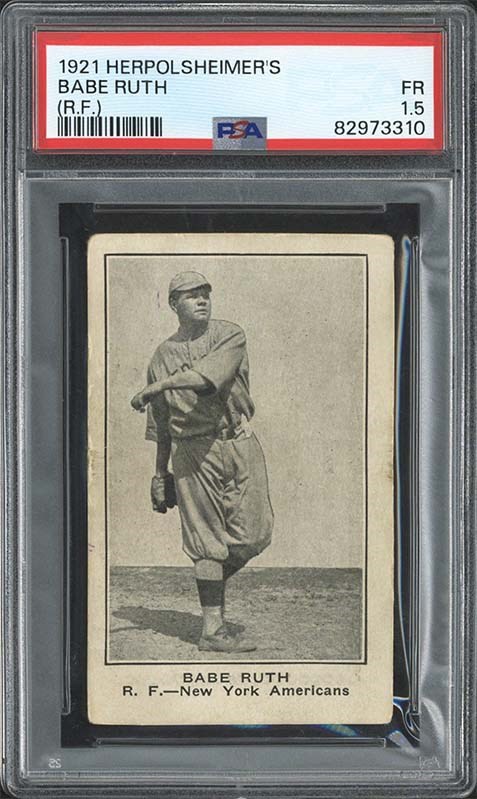
Rare 1921 Herpolsheimer Baseball Cards Surface for Auction
In the world of sports memorabilia collecting, an unexpected and exciting discovery has recently emerged. Tucked away in a seemingly ordinary Band-Aid box, a remarkable find was made – a cache of 39 cards from the elusive 1921 Herpolsheimer set, including nine previously unknown cards. These hidden treasures, untouched for almost a century, have now been unveiled in Love of the Game Auctions’ current event.
The Herpolsheimer cards, issued in 1921, have long been considered some of the rarest in the baseball card collecting world. Up until now, only 105 cards from this set had been authenticated and graded across both PSA and SGC population reports. This recent find not only expands the known universe of these cards but also enriches it with new faces.
Al Crisafulli, the auction director at Love of the Game, couldn’t contain his excitement about the discovery. “I’ve been captivated by these for years,” he shared, reflecting the sentiment of serious collectors who are aware of the rarity and historical value of the Herpolsheimer issue.
The story behind this find is as intriguing as the cards themselves. Back in 2019, at an estate sale near Grand Rapids, Michigan, these cards were stumbled upon inside a humble Band-Aid box. In what seems like a simple container, a small fortune in paper treasures was hidden away. After maintaining contact with the owner for four years, Crisafulli finally secured these gems for auction. They have since been graded by PSA and each card will be auctioned off individually.
Included in this incredible find is a card of the legendary Babe Ruth, only the second of its kind known to exist. Given the scarcity and iconic status of the Great Bambino, this card alone is expected to command a high price at the auction. The collection also features other Hall of Famers such as Tris Speaker, Grover Cleveland Alexander, Rabbit Maranville, John McGraw, Red Faber, and Sam Rice, further enhancing its significance.
Beyond the captivating front designs of these cards, the backs reveal another layer of interest, as they advertise the Boy’s Fashion Shop at the Grand Rapids retail store. The discovery of additional cards not listed in the original checklist suggests that the Herpolsheimer set may be larger than previously thought. Instead of the believed 69 or 70 cards, there is now speculation that the set might comprise 78 or 79 cards.
Crisafulli first became aware of these cards in 2019 when the owner discreetly inquired about them on the Net54 sports card forum. The post caught the attention of forum members, as well as Crisafulli, who reached out and stayed in touch until securing the cards for the auction consignment.
The history of the Herpolsheimer Company, which originally released these cards, is just as fascinating as the cards themselves. Founded in 1870 as a dry goods store by William Godlove Herpolsheimer and Charles G.A. Voigt, it soon became a prominent presence in Grand Rapids and beyond. Henry Herpolsheimer later took over, followed by his son Arthur, who steered the company into a merger and expanded it to include furniture sales. Sadly, Arthur’s life was cut short, adding a somber note to the family’s story.
The legacy of the store even touched national history when Betty Bloomer, who would later become First Lady as the wife of President Gerald R. Ford, worked there as a fashion coordinator in 1942.
This discovery of a new batch of Herpolsheimer cards reshapes our understanding of their distribution and significance, suggesting a more widespread release than previously believed. It paints a picture of a department store that cleverly used the allure of baseball’s most celebrated figures to attract its clientele.
The Band-Aid box that housed these cards, a 1930s metal relic, serves as a poignant reminder of the journey these cards have taken – from being a promotional tool in a local store to becoming coveted historical artifacts in the world of collectibles.
As the auction date draws near, these cards are set to captivate the collecting community, offering a rare glimpse into the early days of baseball card collecting. Each card, with its faint pencil markings and signs of wear from years of handling, tells a unique story – a story that collectors will soon have the opportunity to continue as they become the new custodians of these pieces of baseball history.